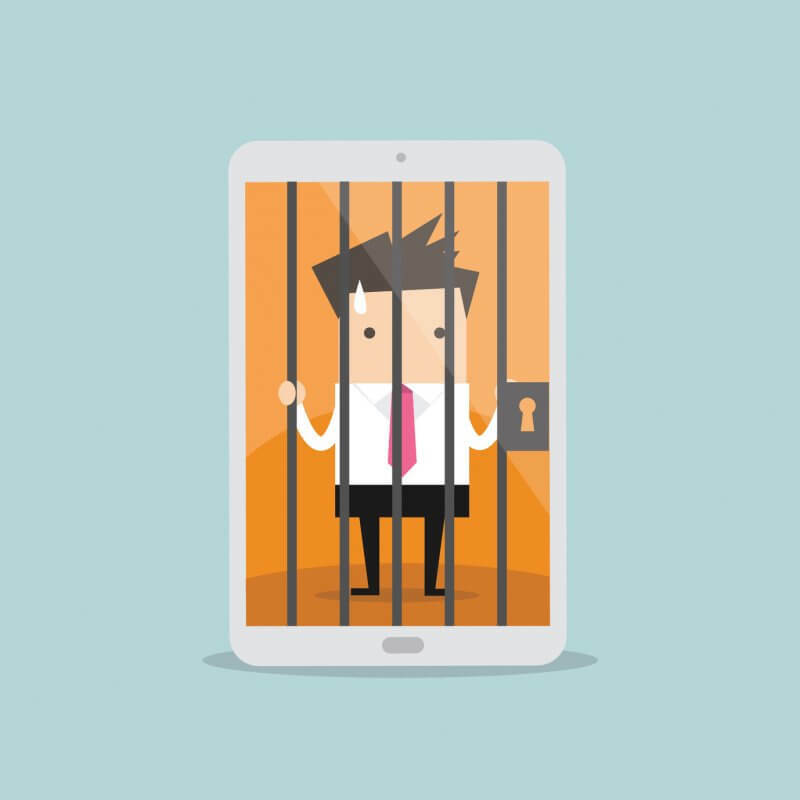Definition of Jailbreak (Unlock Smartphone)
Miscellanea / / July 04, 2021
By Guillem Alsina González, in Nov. 2017
 Many of the smartphones (“smart” mobile phones) that users hold in their hands every day are “prisoners” of the operator and / or the company manufacturer, so we have to "release" them, metaphorically, but also in practice, to be able to enjoy all their potential.
Many of the smartphones (“smart” mobile phones) that users hold in their hands every day are “prisoners” of the operator and / or the company manufacturer, so we have to "release" them, metaphorically, but also in practice, to be able to enjoy all their potential.
This concept of liberation may have slight differences in concept depending on whether we are talking about a mobile Android or an iPhone.
If the context in which the term “release” is used is Android, it will generally refer to the act of making the terminal independent from having to use SIM cards from the operator that supply.
In addition to providing telephony and data services (access to Internet), the operators also sell to their customers the tools with which they will take advantage of these services, that is, telephones.
In this case, we will say that the terminals are "subsidized" although, really, users end up paying their amount in one way or another. To ensure that we comply, the operators block the phone for a certain period of time in a way that is only usable with their SIM cards.
After this period of time, we can release it (which means that we can use it with a SIM from any other operator) with a code provided by our same operator.
In some countries, the time that operators can keep cell phones locked is legally regulated.
We can also force the release of the terminal using other procedures, that do not guarantee success and that, in some cases, can block the phone, preventing its use.
If we talk about changing the operating system of the terminal, normally we will have to use the expression "open the bootloader”.
The system loader (bootloader) is, as the name suggests, the one in charge of loading the operating system (Android) of the terminal. The system cannot be replaced by another distribution Android, without first "opening" this charger, thereby allowing you to install a different system.
If we buy the phone not financed through an operator, it will not be subject to such restrictions. So, we say that it is a "free" phone.
In the case that we are talking about an iPhone, we will not have the Liberty to change the operating system, since it is shielded by Apple, and the same problems to change the operator if we have not acquired our already released terminal.
But, in addition to imposing its platform software, Apple also imposes some restrictions more to your phone, such as being able to install applications only through the App Store, your own store, while, in contrast, for the Android platform there are perfectly usable alternatives to Google Play without having to manipulate the software from the terminal, as is Aptoide.
The process of jailbreak (literally "break the cage" in English) consists, broadly speaking, in changing the core of the iOS system that comes from the factory with another modified one that allows you to do certain things other than the original.
This grants privileges to Username to modify certain system behaviors, add extensions, modify the visual appearance of the iOS, and install applications not authorized by Apple and, therefore, not available in the App Store.
This last possibility is the most attractive offered by the procedure of jailbreak For the users.
The problem presented by an iPhone to which a jailbreak is that you can not update the software through official Apple updates.
Each generation of the iPhone and new version of the iOS should have its own system of jailbreak, as Apple introduces improvements to safety in each new terminal and version of the system to prevent the release by hackers.
The process of jailbreak It's legal in the United States, but it breaks Apple's warranty.
Photo: Fotolia - Inueng
Themes in Jailbreak (Unlock Smartphone)


